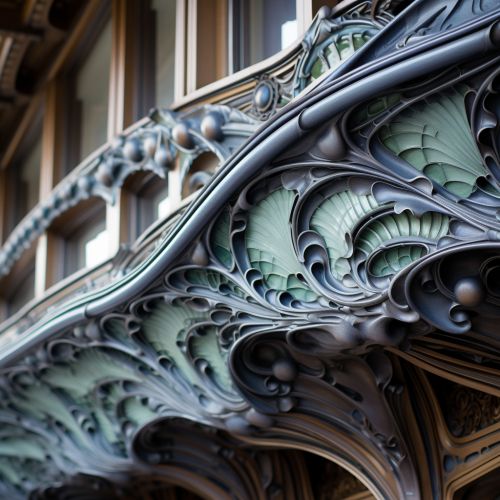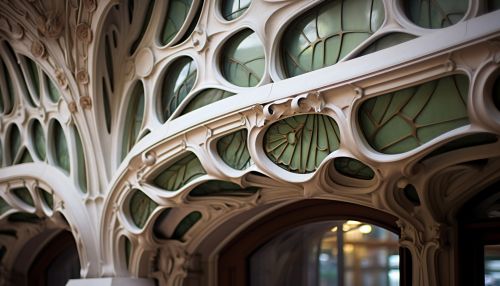Art Nouveau
Origins and Influences
Art Nouveau, a term derived from the French for 'new art', emerged in the late 19th century as a reaction against the academic art, eclecticism and historicism of 19th century architecture and decoration. It was inspired by natural forms and structures, particularly the curved lines of plants and flowers, and was a deliberate attempt to create a new style, free of the imitative historic styles that had dominated much of 19th century art and design.
The movement was also influenced by a variety of other sources, including the Arts and Crafts movement in England, which advocated for the value of handcraftsmanship and design over mass production. The works of the Pre-Raphaelite Brotherhood, with their emphasis on detail, colour and complex compositions, also had a significant impact on the development of Art Nouveau.


Characteristics
Art Nouveau is characterized by its use of long, sinuous, organic lines and was employed most often in architecture, interior design, jewelry, glass design, posters, and illustration. It is also known for its use of modern materials, such as iron, glass, ceramics and later concrete, to create unusual forms and effects.
The style often incorporated stylized, sinuous forms of plants, flowers, and other natural elements, as well as female figures. The use of asymmetry, dynamic lines, and elegant decorative elements were also common features of Art Nouveau design.
Notable Artists and Works
Many artists and designers are associated with the Art Nouveau movement, including Alphonse Mucha, Gustav Klimt, and Antoni Gaudí.
Mucha's work, particularly his posters and advertisements, are some of the most recognizable examples of the Art Nouveau style. His designs often featured beautiful women surrounded by lush, detailed floral elements and intricate decorative borders.
Gustav Klimt, an Austrian painter, is also associated with the Art Nouveau movement. His paintings, such as 'The Kiss', are known for their decorative, ornamental style and their exploration of symbolic and erotic themes.
Antoni Gaudí, a Spanish architect, is perhaps the most famous practitioner of Art Nouveau in architecture. His buildings, such as the Casa Batlló and the Sagrada Família in Barcelona, are renowned for their organic forms, intricate detailing, and innovative use of materials.
Impact and Legacy
Art Nouveau had a significant impact on the arts and architecture and marked a departure from the historicism that dominated much of the 19th century. It paved the way for the development of various modernist styles in the early 20th century, including Futurism, Constructivism, and Art Deco.
Despite its relatively short lifespan (it was most popular from 1890 to 1910), Art Nouveau continues to be appreciated for its artistic and aesthetic qualities. Today, it is considered an important precursor to modernism and a significant contributor to the evolution of art and design in the 20th century.
